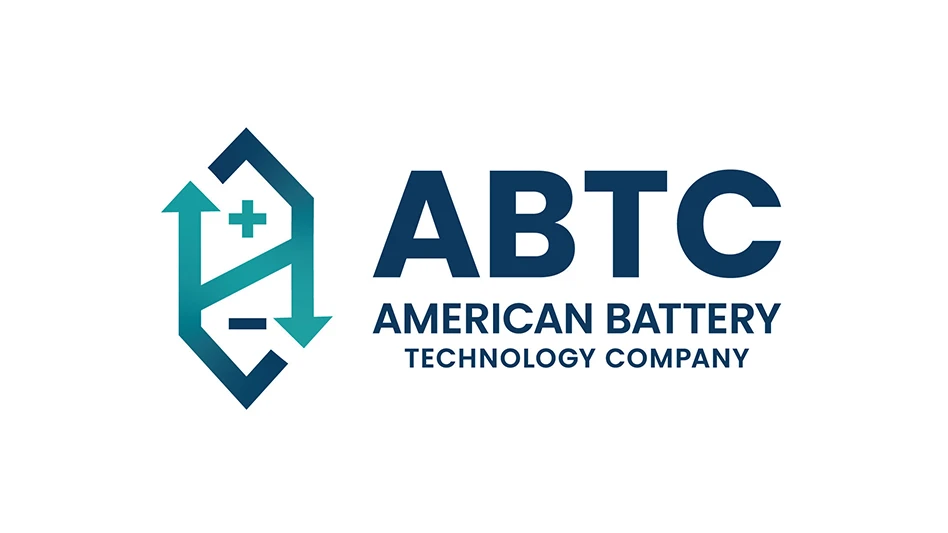 Paper recycling, in some cases, occurs one box, one newspaper or even one piece of office paper at a time at the beginning stages of the recycling loop. Some of these initial contributors to the recycling process would probably be surprised to learn that the world’s papermakers now consume more than 230 million tons of scrap paper annually in the production of new paper and packaging.
Paper recycling, in some cases, occurs one box, one newspaper or even one piece of office paper at a time at the beginning stages of the recycling loop. Some of these initial contributors to the recycling process would probably be surprised to learn that the world’s papermakers now consume more than 230 million tons of scrap paper annually in the production of new paper and packaging.
A weighty figure as large as 230 million tons can be difficult to grasp even for recyclers and traders who are accustomed to dealing with dense bales and container loads of paper and cardboard.
The well-established scale of the paper recycling industry is spread out to all parts of the world in terms of collection, processing and consumption of recovered fiber.
Makers of containerboard, newsprint, tissue and all other grades of paper have made substantial commitments to using recovered fiber as a feedstock at mills throughout the world.
Their investments represent a critical step in closing the loop for individuals and government jurisdictions that want to divert paper from the landfill as well as for the private sector processors and packers of recovered fiber around the world.
The following pages offer brief snapshots of some of the world’s largest corporate consumers of recovered fiber.
Each of these companies is taking a share of the more than 230 million tons of recovered fiber that are consumed annually—some of them substantially—around the world, but they represent the clichéd tip of the iceberg of an industry that includes paper producers large and small.
The information on pages 92 and 93 is divided into four quadrants representing different parts of the world and also includes a brief characterization of whether the region described is a net importer or exporter of recovered fiber.
Recovered fiber consumers of the world
A list, by region, of major paper producers and scrap paper consumers and a snapshot of recovered fiber global trading patterns.

North America
Major paper producers/recovered fiber consumers
- International Paper, www.ipaper.com – The producer of a wide range of paper and board grades consumes as much as 5 million tons of recovered fiber at its mills in North America.
- Rock-Tenn, www.rocktenn.com – This containerboard producer consumes more than 4 million tons of recovered fiber at its mills located throughout the U.S.
- Cascades, www.cascades.com/en – This Canada-based paper and board producer consumes more than 2.5 million tons at its mills in Canada and the U.S., representing 79 percent of the company’s furnish.
- Georgia-Pacific, www.gp.com – The Atlanta-based forest products company consumes some 2.5 million tons of recovered fiber in the production of containerboard and other paper grades.
- Caraustar/Newark Group, www.caraustar.com – When merged together, these two containerboard producers will consume between 1.5 million and 2 million tons per year of recovered fiber.
- Resolute Forest Products, www.resoluteforestproducts.com – The Canada-based producer of graphic papers and pulp annually consumes more than 1.5 million tons of recovered fiber, about 12.5 percent of its furnish.
- Sonoco, www.sonoco.com – A producer of $4.8 billion of packaging grades and packaging products annually at numerous mills and plants, the company (which also has plants in Europe and South America) consumes 1.4 million tons or more of recovered fiber each year.
- Pratt Industries, www.prattindustries.com – The U.S. division of this Australian paper company has been expanding its presence and now consumes more than 1 million tons of scrap paper annually in the U.S.
- Kimberly-Clark, www.kimberly-clark.com – This multinational maker of tissue and hygiene products has used slightly less than 1 million tons of recovered fiber each year from 2010 through 2013, on average.
- Kruger, www.kruger.com – In 2013 recovered fiber made up 24 percent of the feedstock used by this Montreal-based maker of containerboard, newsprint and tissue products.
Recovered fiber flow pattern: North America is a net exporter of as many as 19 million tons of scrap paper annually. Major scrap paper grades exported include old corrugated containers (OCC), mixed paper and old newspapers (ONP). Mills in East Asia absorb the most exported tonnage, followed by mills in Mexico and in Central and South America.
Central and South America
Major paper producers/fiber consumers
- Biopappel, www.biopappel.com/en – This Mexico-based producer of several paper grades consumes 1.6 million tons of recovered fiber annually.
- Copamex, www.copamex.com – Based in Mexico, this producer of several paper and packaging grades consumes recovered fiber and operates a recycling division.
- CMPC, www.cmpc.cl – The Chile-based pulp and paper producer consumes more than 700,000 metric tons of recovered fiber annually at mills in Chile, Argentina, Colombia, Mexico, Peru and Uruguay.
- Klabin, www.klabin.com.br/en – The Brazil-based producer of paper and packaging bills itself as the largest recycler of aseptic cartons in the world, consuming more than 200,000 tons per year, and brought a recycled-content containerboard paper machine online in 2014.
- Papel Prensa, www.papelprensa.com – The Argentinian newsprint producer operates its own deinking plant to use recovered fiber to supply 10 percent or more of its overall furnish.
Recovered fiber flow pattern: Parts of heavily forested South America rely largely on wood chips and natural pulp as feedstock while importing modest amounts of recovered fiber. Mexico is historically a net importer of recovered fiber, though its domestic collection infrastructure has been expanding.
Europe, Africa and the Middle East
Major paper producers/recovered fiber consumers
- Smurfit Kappa, www.smurfitkappa.com – This $9.3 billion Ireland-based packaging producer consumes 5.3 million metric tons of recovered fiber annually, predominantly in Europe.
- Stora Enso, www.storaenso.com – In 2013 recovered fiber comprised 26 percent of the raw materials used to make paper and board at this Finland- and Sweden-based producer of more than 11 million tons of paper products.
- SCA, www.sca.com – The Sweden-based tissue and hygiene products maker (with paper mills located around the world) uses recovered fiber as 50 percent of its tissue production feedstock in Europe, North America and Latin America.
- Mondi, www.mondigroup.com – This $7.6 billion global paper producer, based in South Africa, uses 1.5 million tons of recovered fiber, much of that at mills in eastern and central Europe.
- SAICA, www.saica.com – The Spain-based packaging grades producer (with mills in Spain, France and the United Kingdom) relies largely on recovered fiber to produce its 2.4 million tons of paper each year.
- UPM, www.upm.com – The Finland-based graphic papermaker with 18 mills worldwide uses 36 percent recovered fiber as feedstock.
- Norske Skog, www.norskeskog.com – This Norway-based newsprint maker used slightly less than 1 million metric tons of recovered fiber in 2013, comprising 31 percent of its feedstock.
- DS Smith, www.dsmith.com – This U.K.-based papermaker and packaging producer uses recovered fiber at all nine of its paper mills in Europe, which produce 2.6 million metric tons of paper annually.
- Papierfabrik Palm, www.papierfabrik-palm.de/en – The Germany-based producer of more than 2 million tons annually of graphic papers relies solely on recovered fiber at its mill in the United Kingdom.
- WARAQ, www.waraq.com – The Saudi Arabia-based producer of more than 200,000 tons uses recovered fiber (mainly OCC) as the predominant feedstock at its Damman, Saudi Arabia, mill.
Recovered fiber flow pattern: The European Union is a net exporter of recovered fiber, exporting as many as 10 million tons, including OCC, ONP and office grades annually. East Asian mills are common destinations.
Asia and Australia
Major paper producers/recovered fiber consumers
- Nine Dragons, www.ndpaper.com – One of China’s largest containerboard makers uses predominantly recovered fiber in production of more than 8 million tons of board annually.
- Lee & Man, www.leemanpaper.com – Based in Hong Kong with most of its plants in China, this containerboard maker has nearly 7 million tons of production capacity and consumes more than 6 million tons of OCC yearly.
- Oji Holdings Corp., www.ojiholdings.co.jp/english – The papermaking division of this Japanese conglomerate consumes some 4 million tons of recovered fiber, or nearly 63 percent of its feedstock needs.
- Nippon Paper Group, www.nipponpaper group.com/english – The Japan-based producer uses 55 percent recovered fiber in the production of more than 4 million tons of packaging grades and newsprint yearly.
- Chenming Group, www.chenmingpaper.com/en – The Chinese producer of some 6 million tons of paper grades yearly is working on a program to “maximize its utilization” of recovered fiber.
- Shandong Huatai Paper, www.huataipaper.com – The northern China-based producer of multiple paper grades uses OCC in the production of more than 2 million tons per year of containerboard and ONP in the production of newsprint.
- Cheng Loong Corp., www.clc.com.tw/eng-index.asp – This Taiwanese producer of numerous paper grades uses recovered fiber as 92 percent of the feedstock for the packaging grades it produces.
- Asia Pulp & Paper, www.app.com.cn/en – This producer of some 9 million tons annually of pulp and paper in Indonesia and China consumes more than 500,000 tons of recovered fiber annually at its mills in Ningbo, China.
- Visy, www.visy.com.au – This Australian paperboard producer, parent company of Pratt Industries in the U.S., uses up to 100 percent recovered fiber feedstock at mills located in three different Australian states.
- ITC Corp., www.itcportal.com – One of India’s largest papermakers, ITC has set up a program to encourage recycling participation in that nation to help furnish its mills.
Recovered fiber flow pattern: The nations of East Asia have traditionally been and remain net importers of recovered fiber, with as many as 30 million tons imported annually by China alone. Mills in China and other East Asian countries import OCC, mixed paper and most other major recovered fiber grades.
Get curated news on YOUR industry.
Enter your email to receive our newsletters.

Explore the February 2015 Issue
Check out more from this issue and find your next story to read.
Latest from Recycling Today
- Circular by Shapiro releases "5 for Five" sustainability series
- Graphic Packaging set to close Ohio CRB facility
- Ameripen voices support for Maryland EPR bill
- Matalco to close Canton, Ohio, plant
- Maryland county expands curbside recycling to include electronics
- California EPS ban will be enforced
- YKK AP America introduces BetterBillet
- Fresh Perspective: Cameron Keefe





